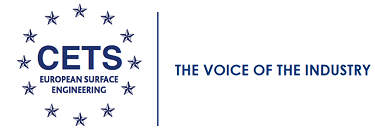Recently Malte Zimmer, Chairman Regulatory Affairs prepared an article “Surface treatment industry calls on EU to revise authorisations”. This article is published on July 26th, 2018 in the newsletter of CHEMICAL WATCH, the website for European Global Risk and Regulation News.
The European Committee for Surface Treatment (CETS) has called on Echa and the Commission to look again at certain uses of substances that have been added to the REACH authorisation list.
The organisation claims some substances were added because they have not been correctly identified as intermediates. Intermediates are exempt from REACH authorisation.
This is because the Commission and Echa have been using narrower criteria than those laid out in REACH, to identify intermediates, it adds.
The Regulation’s criteria for identifying intermediates are:
- the substance must be manufactured for, and consumed in, a chemical process; and
- there must be an intentional transformation of the substance into another substance in that chemical process.
In a position paper seen by Chemical Watch, CETS says “there are many uses of substances to which these conditions apply. For example, all metal salts that are used for galvanic or electroless metal deposition, fall under these definitions – laborious authorisations would not be required”.
Nevertheless, it adds, the criteria is not properly implemented and enforced under REACH. The revision, it says, should look at all cases where substances are intentionally transformed into different ones, in the workplace.
And it calls on the Commission and Echa to “clearly state that by applying the correct intermediate concept such uses of substances will no longer be threatened by authorisation requirements”.
“This would return some certainty to the markets, eventually”.
The narrower criteria, says CETS, is found in Echa’s 2010 guidance on intermediates – agreed between the agency, member states and the Commission. This says that when the “main aim of the chemical process is not to transform a substance into another, or when it is not used for this main aim but to achieve another function, the substance should not be regarded as an intermediate under REACH”.
CETS says that there is no mention of a specific goal or ‘main aim’ in the REACH legal text and that by using this definition, the legal framework has been “set by enforcement bodies, without consulting legislators”.
Legal cases
The paper also highlights an Echa Board of Appeal case on the substance diarsenic trioxide. Referring to the REACH legal text, the BOA say it matches the “two clear requirements that need to be met cumulatively in order for a substance to qualify as an intermediate”:
The Board concluded that Echa’s interpretation of a ‘main aim’ therefore “amounts to an overly restrictive interpretation of the concept of intermediate”.
It adds that this is “something that is unsupported by the letter and spirit of the REACH Regulation and ignores economic reality”.
However, following the BOA decision, a European Court of Justice (CJEU) case, on the identification of acrylamide as an intermediate, came to a different conclusion.
The CJEU sided with Echa and the Commission, rejecting the appellants claim that acrylamide was being used for an intermediate use. The appellant said the authorities did not identify acrylamide as an intermediate because of the “added condition” regarding the main aim or purpose of the substance. It also said that, once identified as an intermediate, the substance should not be added to the REACH candidate list of those being considered for authorisation.
However, the court concluded that “such a literal interpretation is manifestly contrary to the objective of the REACH Regulation to protect health and the environment … and, it is incompatible with the general scheme of that regulation”.
The European Commission and Echa are currently analysing the court’s judgment. Chemical Watch understands that, depending on the outcome of the analysis, it may lead to an amendment on the guidance on intermediates.
© 2018 ChemicalWatch, Leigh Stringer
